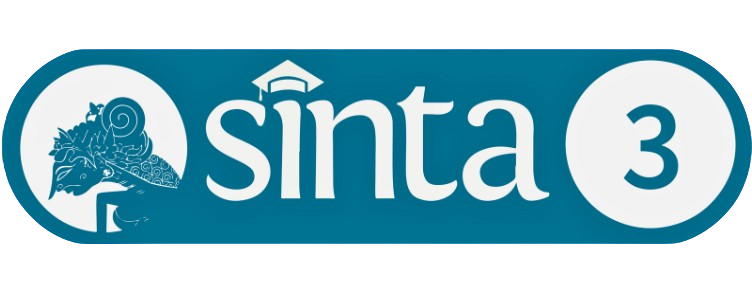The Relationship between Self-Esteem and Bulimia Nervosa in Adolescent Girls: A Narrative Review
Downloads
Low self-esteem has been hypothesized as a risk factor for the development of eating disorders, with the majority of bulimia sufferers being female adolescent. This study aims to investigate the relationship between self-esteem and the tendency toward bulimia nervosa in female adolescent globally. The study shows that several previous studies have proven that one of the causes of the tendency toward bulimia nervosa is low self-esteem. The results of this study indicate that there is a relationship between self-esteem and the tendency toward bulimia nervosa eating disorder in female adolescent. It can be concluded that low self-esteem can make individuals more vulnerable to experiencing bulimia nervosa eating disorders.
Abdel-Khalek, A. (2016). Introduction to the Psychology of self-esteem (hlm. 1–23).
American Psychological Association. (2013). Diagnostic and statistical manual of mental disorders: DSM-5TM, 5th ed (hlm. xliv, 947). American Psychiatric Publishing, Inc. https://doi.org/10.1176/appi.books.9780890425596
Barlow, D. H., Durand, V. M., & Hofmann, S. G. (2018). Abnormal psychology: An integrative approach (Eighth edition). Cengage Learning.
Cella, S., Cipriano, A., Aprea, C., & Cotrufo, P. (2021). Self-Esteem and Binge Eating among Adolescent Boys and Girls: The Role of Body Disinvestment. International Journal of Environmental Research and Public Health, 18(14), 7496. https://doi.org/10.3390/ijerph18147496
Cockerham, E., Stopa, L., Bell, L., & Gregg, A. (2009). Implicit self-esteem in bulimia nervosa. Journal of Behavior Therapy and Experimental Psychiatry, 40(2), 265–273. https://doi.org/10.1016/j.jbtep.2008.12.003
Colmsee, I.-S. O., Hank, P., & BoÅ¡njak, M. (2021). Low Self-Esteem as a Risk Factor for Eating Disorders: A Meta-Analysis. Zeitschrift Für Psychologie, 229(1), 48–69. https://doi.org/10.1027/2151-2604/a000433
Du, H., King, R. B., & Chi, P. (2017). Self-esteem and subjective well-being revisited: The roles of personal, relational, and collective self-esteem. PLOS ONE, 12(8), e0183958. https://doi.org/10.1371/journal.pone.0183958
Dunkley, D. M., & Grilo, C. M. (2007). Self-criticism, low self-esteem, depressive symptoms, and over-evaluation of shape and weight in binge eating disorder patients. Behaviour Research and Therapy, 45(1), 139–149. https://doi.org/10.1016/j.brat.2006.01.017
Fairburn, C. G., Cooper, Z., & Shafran, R. (2003). Cognitive behaviour therapy for eating disorders: A "transdiagnostic” theory and treatment. Behaviour Research and Therapy, 41(5), 509–528. https://doi.org/10.1016/S0005-7967(02)00088-8
Fairburn, C. G., & Harrison, P. J. (2003). Eating disorders. The Lancet, 361(9355), 407–416. https://doi.org/10.1016/S0140-6736(03)12378-1
Galmiche, M., Déchelotte, P., Lambert, G., & Tavolacci, M. P. (2019). Prevalence of eating disorders over the 2000–2018 period: A systematic literature review. The American Journal of Clinical Nutrition, 109(5), 1402–1413. https://doi.org/10.1093/ajcn/nqy342
Krauss, S., Dapp, L. C., & Orth, U. (2023). The Link Between Low Self-Esteem and Eating Disorders: A Meta-Analysis of Longitudinal Studies. Clinical Psychological Science, 11(6), 1141–1158. https://doi.org/10.1177/21677026221144255
Mas, M., Luisa, M., Avargues Navarro, M., López, A., Jiménez, L., Torres-Pérez, I., Del, C., Sánchez, R., Pérez, M., & Gregorio, S. (2011). Personality traits and eating disorders: Mediating effects of self-esteem and perfectionism 1. International Journal of Clinical and Health Psychology, 11, 205–227.
Mehler, P. S. (2003). Bulimia Nervosa. New England Journal of Medicine, 349(9), 875–881. https://doi.org/10.1056/NEJMcp022813
Mora, F., Fernandez Rojo, S., Banzo, C., & Quintero, J. (2017). The impact of self-esteem on eating disorders. European Psychiatry, 41(S1), S558–S558. https://doi.org/10.1016/j.eurpsy.2017.01.802
Patton, G. C., Selzer, R., Coffey, C., Carlin, J. B., & Wolfe, R. (1999). Onset of adolescent eating disorders: Population based cohort study over 3 years. BMJ, 318(7186), 765–768. https://doi.org/10.1136/bmj.318.7186.765
Pelc, A., Winiarska, M., Polak-Szczybyło, E., Godula, J., & Stępień, A. E. (2023). Low Self-Esteem and Life Satisfaction as a Significant Risk Factor for Eating Disorders among Adolescents. Nutrients, 15(7), 1603. https://doi.org/10.3390/nu15071603
Reel, J., Voelker, D., & Greenleaf, C. (2015). Weight status and body image perceptions in adolescents: Current perspectives. Adolescent Health, Medicine and Therapeutics, 149. https://doi.org/10.2147/AHMT.S68344
Rohde, P., Stice, E., & Marti, C. N. (2015). Development and predictive effects of eating disorder risk factors during adolescence: Implications for prevention efforts. International Journal of Eating Disorders, 48(2), 187–198. https://doi.org/10.1002/eat.22270
Rosenberg, M. (1965). Rosenberg Self-Esteem Scale [dataset]. https://doi.org/10.1037/t01038-000
Smink, F. R. E., Van Hoeken, D., Dijkstra, J. K., Deen, M., Oldehinkel, A. J., & Hoek, H. W. (2018). Self"esteem and peer"perceived social status in early adolescence and prediction of eating pathology in young adulthood. International Journal of Eating Disorders, 51(8), 852–862. https://doi.org/10.1002/eat.22875
Stice, E. (1994). Review of the evidence for a sociocultural model of bulimia nervosa and an exploration of the mechanisms of action. Clinical Psychology Review, 14(7), 633–661. https://doi.org/10.1016/0272-7358(94)90002-7
Stice, E., Maxfield, J., & Wells, T. (2003). Adverse effects of social pressure to be thin on young women: An experimental investigation of the effects of "fat talk.” International Journal of Eating Disorders, 34(1), 108–117. https://doi.org/10.1002/eat.10171
World Health Organization. (t.t.). Adolescent health. World Health Organization. https://www.who.int/health-topics/adolescent-health
Copyright (c) 2024 Dea Alifia Ardhani, Endang Retno Surjaningrum

This work is licensed under a Creative Commons Attribution 4.0 International License.
BRPKM is a periodical publication with open access to the Creative Commons Attribution 4.0 International (CC-BY 4.0). Therfore, the copyright remains with the author.
With this license, anyone has the right to use the information and to re-distribute the content contained in this journal for any purpose, including commercial purposes. It can be done as long as it fulfills two conditions, namely; (1) you shall provide attribution by citing the original link source, and state if any changes have been made; and (2) you may not use any legal provisions or technological means of control that can legally restrict others from doing the things that are permitted by this license.
Journal editors will not ask the author to approve the transfer of copyright on all published manuscripts.










